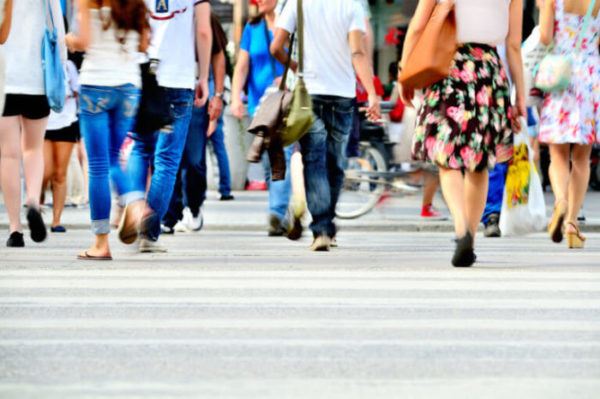
Whether crossing the street at a busy intersection or out for a morning jog around the neighborhood, all of us are likely to spend some time each day sharing space with or in close proximity to moving motor vehicles.
While drivers and pedestrians may take steps to co-exist without incident in our busy society, unfortunately, accidents can happen, and when they do, they can prove disabling or deadly to the pedestrian.
According to the National Highway Traffic Safety Administration, 4,884 pedestrians died in auto-pedestrian accidents in 2014, accounting for 15 percent of all deaths in automobile crashes that year. The NHTSA Fact Sheet also reported that in 2014:
- Ninety percent of these fatal crashes involved a single vehicle
- Eighteen percent of pedestrians killed were struck by hit and run drivers
- Alcohol was a contributing factor in 48 percent of these fatal accidents
Governmental agencies and other pedestrian safety advocacy groups have developed resources designed to educate people on how to stay safe in environments where motor vehicles are present. Through safety outreach programs, these agencies and groups seek to educate pedestrians and drivers alike on how to avoid pedestrian accidents.
Safety Tips for Pedestrians
Some safety precautions individuals can use to avoid pedestrian accidents include:
- Staying on sidewalks or in walking paths, whenever available. A pedestrian is more likely to be seen by drivers if they are where they are expected to be. If the street or roadway does not have a sidewalk, walk facing traffic on the shoulder of the road.
- Staying alert. Smartphones, electronic devices, and anything else that takes your eyes and ears away from the road should not be allowed to become distractions.
- Being visible, especially at night. Most fatal pedestrian accidents occur at night. Wearing bright reflective colors, making eye contact with approaching drivers, and carrying a flashlight can increase a pedestrian’s visibility and lessen their chances of becoming an auto-pedestrian fatality.
- Refraining from the use of intoxicants before or during a walk. The use of drugs or alcohol before or during a walk can impair judgment and ambulation, increasing the chances of becoming involved in a crash.
Safety Tips for Drivers
Drivers are more likely to avoid pedestrian accidents when they use these safety tips behind the wheel:
- Look for pedestrians in unexpected places. A pedestrian can sometimes be found in places they should not be, such as crossing a busy street mid-block or standing in the street rather than on the curb at an intersection.
- Never pass another car stopped at a crosswalk. The other car may be stopped to allow a pedestrian who you cannot see to cross the street.
- Be hyper-attentive in school zones and residential neighborhoods. These areas are often populated with children who may be having too much fun to see a car approaching, so the driver should always be looking out for them.
- Do not drink or do drugs and then drive. A driver’s ability to properly judge distances and react with agility is greatly impaired under the influence of drugs or alcohol. Plus driving under the influence is illegal, and if stopped could land a driver in jail, exposed to stiff fines and other penalties.
- Drive within the speed limit and observe traffic signs. Speed limit and traffic signs serve to get our attention and alert us to areas where pedestrians may be present. Observe them.
Drivers and pedestrians alike can share and enjoy the same space by staying aware of their surroundings, being respectful of each other, and using some basic safety tips. However, when an auto-pedestrian accident does occur, they may want to explore their right to recover any losses they sustain in the accident with an attorney skilled in auto-pedestrian law.
